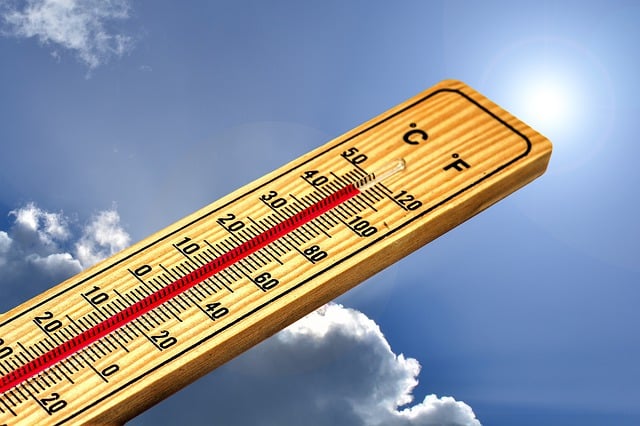Share This Article:

Climate & Comp
Washington, DC (WorkersCompensation.com) – On Wednesday, the U.S. Department of Health and Human Services released the National Heat Strategy for 2024-2030 focused on coordinating heat planning, response and resilience.
The federal interagency National Integrated Heat Health Information System released the strategy that was developed with the input of several federal agencies and departments including the U.S. Department of Labor and OSHA. Officials said the strategy will build resilience to heat and address heat-related health concerns. Roughly 1,220 people die from extreme heat each year in the U.S., the Centers for Disease Control and Prevention (CDC) said.
"Extreme heat is not just an environmental crisis, it's a serious threat to our public health – and communities across the country are struggling to respond. What we're facing today wasn't what we were experiencing 30 or 40 years ago. This is a different world we are in,” said HHS Secretary Xavier Becerra. “The National Heat Strategy recognizes the growing threat of heat, especially on vulnerable populations. The federal government is taking steps to build a heat-resilient future for our entire country, from helping families get air conditioners to protecting farm workers from heat events and unsafe air. Every action we take, and every dollar invested in prevention, preparation, and heat health resilience is a vital step towards ensuring a healthier and safer future for all.”
The strategy comes on the heels of a proposed heat standard for indoor and outdoor workers from OSHA. According to the U.S. Bureau of Labor Statistics, 479 workers died due to heat exposure between 2011 and 2022, and that 33,890 worker-related injuries and illnesses were reported in that same time. OSHA said those numbers were likely vast underestimates.
OSHA’s proposed standard would require employers to create heat hazard plans for their workplaces and would clarify the obligations for employers as well as the steps necessary to protect employees from hazardous heat.
OSHA said workers in outdoor settings are at risk, but so too are those in indoor work settings without climate controls like employees working with machinery and equipment like hot ovens and furnaces. Additionally, some groups of workers, such as pregnant workers and older workers, may be more likely to experience adverse health effects from the heat.
OSHA’s Notice of Proposed Rulemaking for the proposed standard is currently open to public comment before being considered for implementation.
Other federal agencies have already implemented resources for employers to use, including the Building Blocks for a Heat Stress Prevention Training Program from the National Institute of Environmental Health Sciences’ Worker Training Program, which will help employers identify and implement steps to reduce the risk of heat stress for workers in indoor and outdoor environments.
“The National Heat Strategy will help our country prepare for, respond to, and recover from the negative impacts of extreme heat. ASPR will work with federal, state, tribal, and local government agencies to build a prepared, healthy, and heat-resilient nation,” said Dawn O’Connell, Assistant Secretary for Preparedness and Response (ASPR). “And as part of ASPR’s growing mission, our team will rapidly adapt and build new capabilities to address climate change’s evolving and unprecedented threats to human health.”
Other resources include the experimental HeatRisk tool from the CDC and the National Weather Service, which provides a 7-day heat forecast of unsafe temperatures nationwide; Clinical Guidance on Heat and Health from the CDC, which takes a patient-centered approach to protecting at-risk individuals when temperature rise; a Heat and Health Index (HHI) tool from the Office of Climate Change and Health Equity (OCCHE) and the CDC will provide ZIP code-level heat-related illness and community characteristics to measure heat vulnerability; and an updated version of the EMS HeatTracker from the OCCHE and the National Highway Traffic Safety Administration to track Emergency Medical Services responses to heat-related emergencies.
“We are supporting research and dissemination on the intersection of climate change and healthcare, including extreme heat, developing resources to reduce healthcare’s carbon, and supporting the Office of Climate Change and Health Equity’s heat tools development, all part of the whole-of-government response to address the devastating toll that heat takes on our health and healthcare delivery systems,” Dr. Bob O. Valdez, Director, Agency for Healthcare Research and Quality (AHRQ), said.
AI california case management case management focus claims compensability compliance courts covid do you know the rule emotions exclusive remedy florida FMLA fraud glossary check Healthcare health care hr homeroom insurance insurers iowa leadership medical NCCI new jersey new york ohio osha pennsylvania roadmap Safety state info technology texas violence WDYT what do you think women's history women's history month workcompcollege workers' comp 101 workers' recovery Workplace Safety Workplace Violence
Read Also
- Apr 24, 2025
- Frank Ferreri
- Apr 24, 2025
- Liz Carey
About The Author
About The Author
-
Liz Carey
Liz Carey has worked as a writer, reporter and editor for nearly 25 years. First, as an investigative reporter for Gannett and later as the Vice President of a local Chamber of Commerce, Carey has covered everything from local government to the statehouse to the aerospace industry. Her work as a reporter, as well as her work in the community, have led her to become an advocate for the working poor, as well as the small business owner.
Read More
- Apr 24, 2025
- Frank Ferreri
- Apr 24, 2025
- Liz Carey
- Apr 24, 2025
- Claire Muselman
- Apr 24, 2025
- Chris Parker
- Apr 24, 2025
- Anne Llewellyn
- Apr 23, 2025
- Claire Muselman




